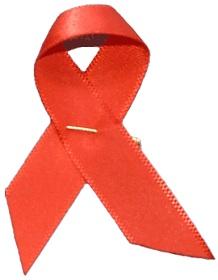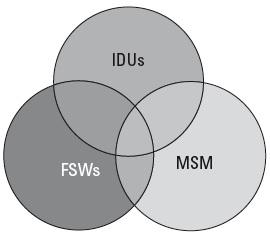Digital wellbeing should be a public health priority for the Arab region
21 October 2025
Published online 1 December 2010

Five weeks ago I was in a workshop in an Arab country to present the findings of a study that our team has recently conducted on HIV modes of transmission in that particular country. The audience consisted of key stakeholders working on HIV efforts who came to hear the results of this research. The study established, for the first time, a map of HIV transmission in the national population; the first such achievement in a Middle East and North Africa (MENA) country.
This country happened to be at the vanguard in the MENA region in addressing HIV. The government has acknowledged its HIV problem, established a surveillance system, scaled-up prevention programmes, conducted HIV awareness campaigns, and reformed laws to protect people living with HIV/AIDS and help decrease the stigma and discrimination they face. The mere interest of the country to conduct scientific studies on HIV testifies to the progress it has made to confront its HIV problem.
Nevertheless, as I was presenting a series of results about HIV transmission, I sensed an "uncomfortable reality" on the faces of my audience. The study findings were sketching a brighter picture than many anticipated: there is no HIV epidemic in the general population of this country. HIV transmission is largely confined to specific groups within the population. However, there is a harsh reality facing policymakers in this, and other, MENA countries: HIV is infecting and epidemics are emerging among injecting drug users (IDUs), men who have sex with men (MSM), and female sex workers (FSWs) and their male clients.
The majority of HIV infections are occurring among these population groups or populations in direct sexual contact with them — such as the spouses of members of these at-risk groups. Our study characterized these groups, their prevalence in the population, their behavior, and rate of HIV transmission. At least 46% of HIV infections in this nation are occurring in commercial sex networks. HIV transmissions among IDUs and MSM add another 21%. Taken together, this means that FSWs and their male clients, MSM, and IDUs account for at least 67% of all HIV infections here. Though this country is the most progressive in the region in terms of acknowledging HIV, our request to issue a press release on the findings was politely declined by the National Health Ministry.
This World AIDS Day should be a chance for all those concerned to pause and reconsider their priorities and focus on avoidance of the misery that HIV epidemics entail
It is understandable that the nature of the populations where HIV is spreading poses a dilemma for governments and communities in MENA. How can governments work with such populations whose mere existence is not acknowledged and whose practices are illegal, stigmatized, and condemned? How would the populace perceive use of public funds to prevent HIV among such population groups?
Looking back at the track record of HIV prevention in this region, the stigma of HIV infection has delayed the response to HIV. When efforts finally materialized, most HIV funds were allocated to prevention efforts in the general population; a culturally safe population. But the data accumulated over the years and conclusively affirmed very limited HIV transmission in this population group, but rising HIV epidemics among IDUs, MSM and FSWs and their clients. Though a large fraction of public-health policymakers recognize this reality today, they find it politically thorny to allocate resources to the people most at risk of infection. Resources to tackle the epidemic continue to predominantly target populations where there is little or no HIV, and the actual people in need are just spectators in what seems to me at times a poorly-orchestrated theatrical play titled "HIV prevention in MENA".
MENA countries continue to suffer from a shortage of human and financial capacity to confront the HIV epidemic. Much of the efforts in the region are deservingly credited to international organizations, such as the Global Fund to Fight AIDS, Tuberculosis and Malaria, United Nations AIDS Programme on HIV/AIDS (UNAIDS), the World Health Organization (WHO), and the World Bank for implementing programmes, building capacities within countries, and funding HIV prevention efforts. Indeed, several strong-willed members at the regional offices of these international organizations are the heroes who championed HIV control efforts and made a lasting impact on systems of HIV surveillance and prevention.
Nonetheless, the effectiveness of these organizations is dependent on the character and caliber of its leaders and staff. Efforts have been interrupted and suffered when staff come and go. The views and priorities of these international organizations have sometimes represented a cultural consensus that emphasizes approaches influenced by a Western cultural perspective. Yet, some of these views contradict the cultural norms prevalent among policymakers and communities in MENA, such as those in relation to MSM.

World Bank
Against this background, civil-rights groups and NGOs are emerging in the region, some of which are defending and advocating for rights that have been widely accepted in some areas of the world, but are in conflict with the particular socio-cultural fabric of this region. These NGOs are stressing that HIV prevention cannot be disentangled from human-rights issues, and the need for comprehensive enabling environments for the most at-risk populations. HIV prevention is only one component of a package of issues that must be addressed at the same time.
The opposing or incompatible views of advocacy groups, international organizations, and country-level public health officials, as well as other stakeholders, often lead to ineffective communication. This creates an atmosphere of mistrust that makes HIV policy dialogue at times sounds like a shouting contest. In the end, little is achieved in terms of HIV prevention, as effective HIV programs require a concerted and harmonious effort of all of these players.
Several years ago I visited the facility of an NGO working with IDUs in a poor neighborhood in an Arab capital. The socio-cultural beliefs of this organization were different from the socio-cultural beliefs of its target group. The NGO was providing commendable services to protect drug users against HIV and drug addiction. However, as I toured the facility, I could not escape the feeling that this NGO had a socio-cultural mission that went beyond HIV prevention. This was evident in the kind of publications seen at the facility. With memories of the activities of such NGOs in sub-Saharan Africa, I questioned myself if such an NGO whose cultural roots are far from that of this region could be an effective model for the region.
Sometime later, I was speaking with a field worker of an NGO working with FSWs from another Arab country. She explained to me that FSWs are attracted to the NGO because they provide condoms and a place to pray in peace away from the brothel. This NGO, though a secular one, was providing a spiritual escape for such FSWs. In another discussion with a field worker from yet another secular NGO working with IDUs in yet another Arab country, he vented his frustration that he could not establish an Islamic NGO working with IDUs because the authorities in the country would not permit it, and that most Islamic scholars would not approve such efforts. Islamic NGOs in this region are often viewed with suspicion by governments who fear the popular Islamist opposition, and the majority of religious scholars still cannot accept the rationale for HIV prevention and harm reduction among the key populations at risk.
Though this country is the most progressive in the region in terms of acknowledging HIV, our request to issue a press release on the findings was politely declined.
This World AIDS Day should be a chance for all those concerned to pause and reconsider their priorities and focus on the common dominator of HIV prevention and avoidance of the misery that HIV epidemics entail. This, in my view, naturally implies a public health perspective that disentangles HIV prevention from ongoing acrimonious debates and cynical politics surrounding some of the social issues in MENA.
The reality in this region is that HIV epidemics are emerging among IDUs, MSM, and FSWs and their clients. Other population groups, mostly spouses and sometimes children of members of these groups, are affected by these epidemics. HIV prevention resources should not be wasted on trying to prevent HIV among the general population, where there is very little HIV infection, while ignoring emerging problems among the key populations at risk. HIV resources must be prioritized for where the needs are.
Governments need to work with the populations at risk – even if discretely – and even if the countries do not publicly recognize their existence, or if they deem their practices illegal and illegitimate. A successful formula for HIV efforts could be government-supported NGOs, where governments fund and support NGOs to discretely provide services to the key populations at risk. NGOs can enable governments to deal with these populations indirectly, thereby avoiding political or cultural sensitivities in explicit outreach efforts. Grassroots NGOs from within the cultural fabric of this region are needed and should be supported and empowered to do their HIV prevention work.
HIV prevention in MENA is difficult, but surely possible, if all key players agree to set their differences aside and focus on a principle that all of us could agree with: we need to prevent HIV from spreading further in this region. However thorny the issues can be, we cannot afford to sit back and watch the misery of this unfolding epidemic.
Laith Abu-Raddad is an assistant professor in public health and the principal investigator of the Infectious Disease Epidemiology Group at Weill Cornell Medical College in Qatar (WCMC-Q).
doi:10.1038/nmiddleeast.2010.229
Stay connected: